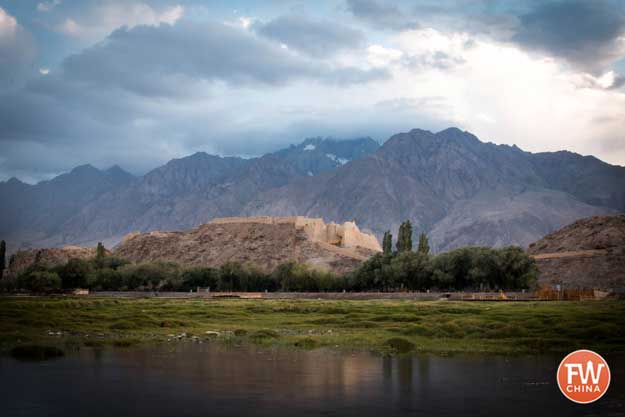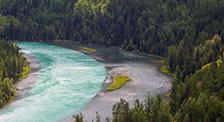Cycling in Xinjiang | What You Need to Know
Over the past decade, I have traversed the vast tract of land known as Xinjiang using every imaginable mode of transportation: trains, planes, cars, motorcycles, camels, etc. It’s only been over the past few years that I’ve adopted cycling in Xinjiang as a fun alternative.
And now that I have…I’m hooked.
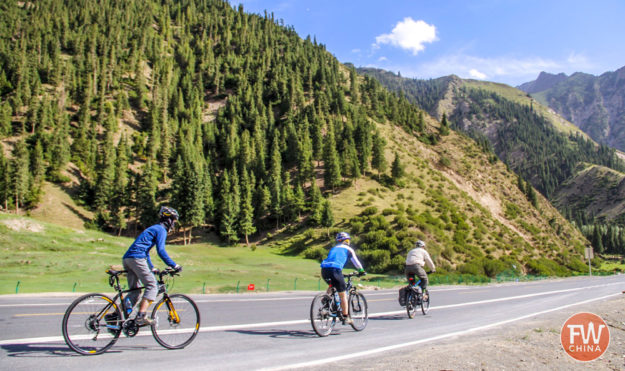
Based on my own experience, there is no better way to experience the beauty of Xinjiang’s scenery and culture than while riding a bicycle.
There’s something to be said about how we as travelers appreciate a location when we’ve had to physically labor to get there. Perhaps that’s why people seem to always overlook those places which are in their own backyard?
This is true for people who climb mountains, hike trails and paddle the waters.
And it’s certainly true for cycling.
Cycling in Xinjiang Drone Video
I recently finished a cycling trip here in Xinjiang and it was unbelievable.
The best that I can do to help you understand the value of cycling through a place like Xinjiang is to transport you there through video.
Specifically, through my video that I shot with a drone ;)
Don’t miss more awesome videos! Subscribe to FarWestChina on YouTube.
Cycling in Xinjiang | Is it Possible?
Unless you’re on a cross-country cycling journey that happens to bring you through Xinjiang (and I’ve been surprised by how many of those type of people come through here), it may seem quite difficult or even impossible to arrange cycling through this region.
There are a couple problems that people encounter when trying to plan such a trip:
- Equipment? Unless you spend a lot of money shipping your bike, tools, spare parts, tents, etc., how are cyclists supposed to have anything to ride on?
- Itinerary? Without specific bike trails or any written guide, how is a traveler supposed to know what roads are bike-worthy?
- Food? China doesn’t have much of a market for camping foods, so short of sending a package full of food, how are travelers supposed to eat anything other than Chinese Ramen Noodles on the road?
How to Rent a Bicycle in Xinjiang, China
The good news is that it is possible to rent bikes in different cities throughout Xinjiang. As an example, I’ve rented bikes at the following locations:
The bad news is that the bikes are usually in pretty bad shape and are meant for city sight-seeing, not any long-distance travel.
Also, in cities like Kashgar and Urumqi, there are stores where it’s possible to buy equipment such as spare tires, tools and gas canisters (although you can take these canisters on public transportation, unfortunately).
Ask around for a “Hu wai dian” (户外店) or literally an “Outdoor store” or for a 自行车店, aka “bike store”, to purchase what you need.
YES, it’s possible to cycle in Xinjiang – by yourself or with a group. But it’s not as easy as I once thought.
One example of the difficulty? Setting up a tent.
Can I Set up a Tent in Xinjiang?
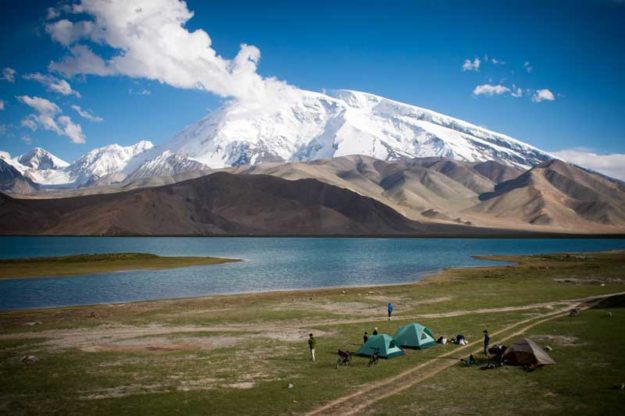
If you’re able to secure a good bike and get it well equipped, one of the next logical questions is lodging. This is where it gets tricky.
In China, camping is not illegal. What IS illegal is for foreigners to stay the night in a place without registering.
Everywhere else in China (except Tibet, perhaps), authorities could care less about this rule.
Here in Xinjiang, however, they care…and they care deeply.
I’ve set up my tent all around Xinjiang and I’ve loved it. Usually, when you enter a park such as the Sayram Lake park or the Nanshan park near Urumqi, your ticket is basically a form of registering.
Outside of that, you’re left with either registering through a travel agency or just hiding off the beaten path to set up your tent.
If you’re told not to camp somewhere, your only real alternative is a hotel.
Unfortunately, Xinjiang is pretty strict about forcing foreigners to stay in specific 3-star hotels (or higher). Thankfully, you can usually get these rooms for between 100-200 RMB, so it’s not a major expense if you must stay in a hotel.
How are the Roads in Xinjiang?
One of the things I have been pleasantly surprised about is the condition of the roads around most of Xinjiang. China has invested millions of dollars over the past decade to build up infrastructure around the region and this is most easily seen in the new railroads and highways.
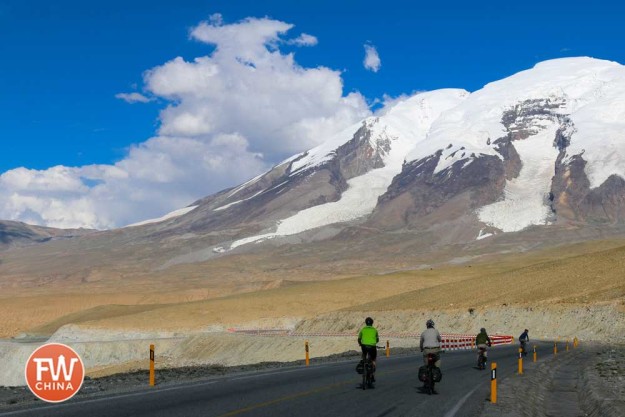
While I’ve still traveled plenty of unpaved roads – see my Xinjiang road trip on Highway 216 as an example – much of what I’ve biked has been very smooth roads, even in some of the most remote places.
What I love most is that while China has continued to build new roads, often they are built alongside the old ones instead of replacing them, which means that I am able to avoid much of the car traffic by cycling on a smaller side road.
This isn’t always the case, but it does happen a lot.
In contrast to the nice roads, “rest stops” aren’t always what you hope them to be while on the road in Xinjiang. There are usually gas stations every so often on the highways but they usually only sell random snacks and the bathrooms are pretty bad.
You can stock up on water at these rest stops, though, which is important, but don’t expect a good meal or even a meal replacement bar.
Should You Go Cycling in Xinjiang??
For the hardcore cyclist, where thousands of kilometers are being traveled and Xinjiang is merely one of many stops, Xinjiang will be a simple but pleasant journey. You already have your equipment and I assume you’re prepared to eat non-traditional food.

For those who would like a fun adventure, a new way to see Xinjiang while you’re here, it might be better for you to contact a good China travel agency to help you.
You’ll get a good bike, your food is taken care of for you and your itinerary will include some of the most scenic spots that most cyclist don’t know to visit.
Finally, whether you’re a hardcore cyclist or just want the pleasure of riding for a short time in a beautiful environment, I selfishly suggest that you consider purchasing the FarWestChina Xinjiang travel guide.
It’s the most comprehensive, up-to-date guide on this region (written by yours-truly) that provides detailed information on all the places you might care to visit while cycling through.
You can purchase through the Amazon link above or download a free planning chapter from the book at this link.





